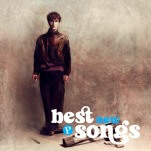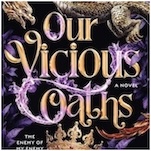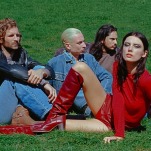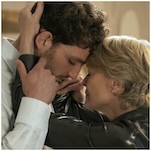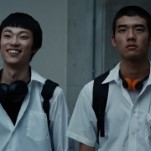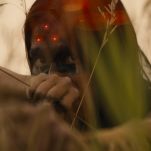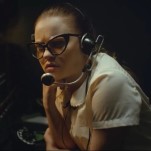Emilie Blichfeldt on Following the Bloody Trail of Cinderella to The Ugly Stepsister
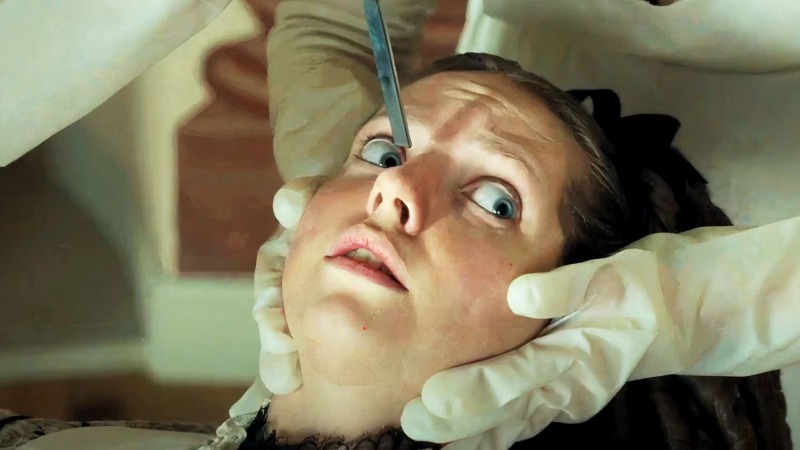
Among our coverage of the Sundance Film Festival this past January, there was one film screener I watched from the comfort of my own home, desperately wishing all the while that I had been seeing it in a packed theater full of unwitting viewers. That movie was director Emilie Blichfeldt’s now critically acclaimed The Ugly Stepsister, a dark as pitch reimagination of Cinderella that weaves a beautifully grotesque gown of humor and horror over its audience, a 21st century body horror update on the universally recognized fairy tale. Arriving in U.S. theaters today in limited release, I can say with no reservation that audiences aren’t going to be prepared for the audacious grossness that awaits them–there are searing images in The Ugly Stepsister that I haven’t been able to stop continuously picturing in the months since I first viewed it. It’s a perfect storm of performance, production design and fearless execution of its gorily fantastical aesthetic.
But with that said, The Ugly Stepsister is not just some gimmick delivery vehicle, trying to get by on the transgressive promise of taking a classic fairy tale and turning it into a bloody mess. Blichfeldt’s debut feature is a startlingly beautiful, ornate piece of filmmaking with incredible design and a star-making central performance from its titular character, played by Norwegian actress Lea Myren. It demonstrates sharp satirical bite and an expertly calculated sense of gallows humor as it reimagines the Cinderella you know into a tale involving anesthesia-free surgery, horny barnyard rendezvous and the most disgusting application of a tapeworm ever put on the big screen.
Paste sat down with the Norwegian director to talk about the breakout acclaim of The Ugly Stepsister, the darkness inherent in the fairy tale story, and the making of a modern body horror classic. You can also read our review of The Ugly Stepsister here.
Paste: I assume you were familiar with fairy tales such as Cinderella from the time you were a child. Was there a specific moment that made you want to highlight the more macabre aspects of that story?
Emilie Blichfeldt: I grew up on a small picture book, a very simplified version of the Brothers Grimm version of Cinderella. There was an image of one of the stepsisters on the prince’s horse after she “fit” into the shoe, but then they both look down in surprise and there are these three drops of blood coming from her foot.
Also, in Norway and Germany we have this Christmas tradition, this Czech and Norwegian version of Cinderella, called Three Wishes for Cinderella, which is this beautiful 1970s Eastern European film version. I wasn’t consciously trying to evoke that, or deciding to do Cinderella and focus on the more gory parts. I actually have this saying, that I didn’t really choose the stepsister; the stepsister chose me.
It was during a creative nap, working with another character who does not fit within the standards of beauty. In this nap, in my dream, I envisioned this character being Cinderella in this Three Wishes for Cinderella version, which is set in winter time. She magically seems to fit the shoe, is lifted up on the horse like she weighs nothing, and they ride away. But there’s a dove in the Grimm’s version that comes and tells the Prince that there’s blood in the shoe, and they both look down in shock. To her horror, she realizes “Of course I’m not Cinderella, I’m the stepsister!” And I woke up in total shock, because I had immediately identified with her.
I have shoe size 11, and I’ve felt on my body and on my psyche what it is to live under the burden of feeling ugly. And I recognized the emotions she had when she tried and failed to fit in. And it really shocked me to think that for the first time I had been in the stepsister’s shoes–pun intended–because she’s an overlooked, ridiculed character that has rarely received any sympathy in these fairy tales. That’s what inspired the story.
Paste: The incredible thing is the way the movie plays with the notion of sympathy–the sympathy the audience has available to give–and the way Elvira is going through, from her perspective, what we would call a “Cinderella story.” The fact that we meet her first, see her reading the Prince’s poems like a gawky schoolgirl, we can’t really help but relate to her. And then the way that you drag her down after that…
Blichfeldt: I think most of us can relate to dreaming about love, about romance, about fitting in. Dreaming about this future where we will be loved as we are. I wanted her to have some kind of relationship with the Prince as well, because it would be weird if she didn’t.
Paste: Although the Prince is hardly worth all of the efforts she makes, I think you would agree.
Blichfeldt: Totally. I sort of see him as this universe’s Justin Bieber, and she’s a big belieber.
With Cinderella, we think about rags to riches, but in this film there’s also class involved. And really our idea that Cinderella goes from rags to riches is a diluted one, because she is almost always, in the different fairy tale versions, a noble daughter who is put in the kitchen for a while, and then she’s back to nobility and royalty. The story doesn’t say that it’s because she’s noble that she gets it back, but she needs to have nobility, charm, money, to be able to dance with the prince at the ball, to have the opportunity. To be in a lower class is to be on the struggle bus without any of those advantages.
Paste: Can you talk about the delicate operation of slowly inverting the sympathy we have for Elvira and her stepsister Agnes? Because when we meet Agnes, she’s really not very sympathetic–I love the haughty bit where she gives her full name to the king’s messenger. But they eventually sort of meet in the middle.
Blichfeldt: I guess for me, I didn’t want to invert their archetypes totally, to make the stepsister the “good one” and Cinderella “the bad one” or whatever, because that’s not true. We found the truth in this story was not about the stepsister only being a victim. As a survivor myself, I know that you don’t become a better person when you self-objectify all the time–you become self obsessed, you compare yourself with others, you don’t see others for who they are, you just see them as competition. That was important for me, to show people why the “ugly stepsister,” who becomes the “wicked stepsister” more and more, does these selfish things.
And with Agnes/Cinderella, I thought, a lot of people think of Cinderella as this only nice person, but I needed to find her humanity as well, because it’s not human to only be nice. That’s like psychotic or something. So I asked myself, what is the Cinderella quality that mine can have? I thought, what if she’s just a natural? Everything comes naturally to her. Her nobility, her emotions, her beauty, her sexuality. She has no shame; she has self love, and that for me is a very Cinderella quality. It’s something you might admire, but that quality doesn’t make her into a picture-perfect character; it makes her human. She will still put herself first, but she will have no shame about that either.
Paste: Agnes sort of has to learn some humility.
Blichfeldt: Yes, yes, yes. I don’t know if she ultimately does, but she’s put in a very hard situation and reacts somewhat eloquently to it. But at the same time, she’s not self-sacrificing in the way that Cinderella in some other versions of the story might be.
Paste: Well she has nothing left, really. They won’t even bury her father!
Blichfeldt: Exactly. I guess that’s where she learns some humility. But the sympathy and where it shifts, I was carefully crafting from scene to scene, but it was something that evolved naturally. I was just following the character and what I thought their natural response would be to the situation. Listing her whole name and titles out to the messenger might not make Agnes seem sympathetic, but she didn’t really do anything wrong, it’s just her name.
The point is, there’s no one who is purely evil and no one who is purely good.

Paste: What was it like, first screening the last five minutes of this movie for audiences in a theater? We all heard the stories about people vomiting at Sundance.
Blichfeldt: I didn’t hear about that until afterward, and apparently it happened in the middle of the movie, which is a bit weird? For a long time I thought it was unrelated, like food poisoning or something, but then in Norway we’ve had puke as well … so I don’t know. It wasn’t my intention!
The first couple of screenings I was very nervous if people would get on with the tone of the movie. It has a very specific tone; it’s quirky, it’s heightened. There’s humor, but there’s also a lot of things going on. It’s camp, but it’s beautiful, but it’s grotesque, you know. I was nervous to see if people would get that. But in terms of the end, with all those strong reactions, and some of the spontaneous applause we’ve seen, that was a good sign. After Sundance we went to Berlin and screened it, and they’re not really famous for horror films, and I was a bit unsure how that would go. But then it was the same response, in the same place, this spontaneous applause!
Paste: Watching a lot of the conclusion, it was hard to imagine how Lea Myren was even able to get through it. I don’t want to spoil it for people, but it looked arduous.
Blichfeldt: She’s insane, that’s a whole other topic. She’s a physical monster. She had 15 hour days, screaming and dragging herself down stairs. She will not stop until I’ve had enough, and even more. She’s a legend.
Paste: How does it feel to make something that you know affects people so viscerally? Because I haven’t been able to stop thinking about a lot of The Ugly Stepsister since I saw it.
Blichfeldt: Ah wow, that’s amazing to hear. Well, people try to ask me “What is body horror, really?” For me, the difference between a splatter or gore movie and body horror is that body horror always carries meaning in its images. So for me, the reason why I want you to feel these things is because there’s meaning behind it. It makes me so proud that body horror in the film is body-horroring, because it’s my first time in the genre and as a lover of it, I wanted to get it right. I’m proud that I was able to push it to the limit. But I really hope that the experience can also give you thoughts, or emotions, or a feeling of release or catharsis somehow.
Paste: I think the theme of inadequacy is so universal to any country or film community that if you screened this for an American audience in Norwegian with no subtitles, they would still intrinsically understand what is happening.
Blichfeldt: True. I love that you say that. For me, when she gets rid of the tapeworm, that’s a metaphor for her self-objectification. When she first swallows the worm, that’s the first action she really does of her own will. Before that, she’s a victim of others’ gaze on her, and there she kind of accepts the “truth” that she should change, and accepts that mission and internalizes the gaze. And that choice becomes a monster within her that eats her, literally and metaphorically, from the inside out. And I think a lot of people in the audience will relate to that feeling of thinking you should be someone that you are not. I hope people will get those ideas, and not only the gore and the horror.
Jim Vorel is Paste’s Movies editor and resident genre geek. You can follow him on Twitter or on Bluesky for more film writing.















